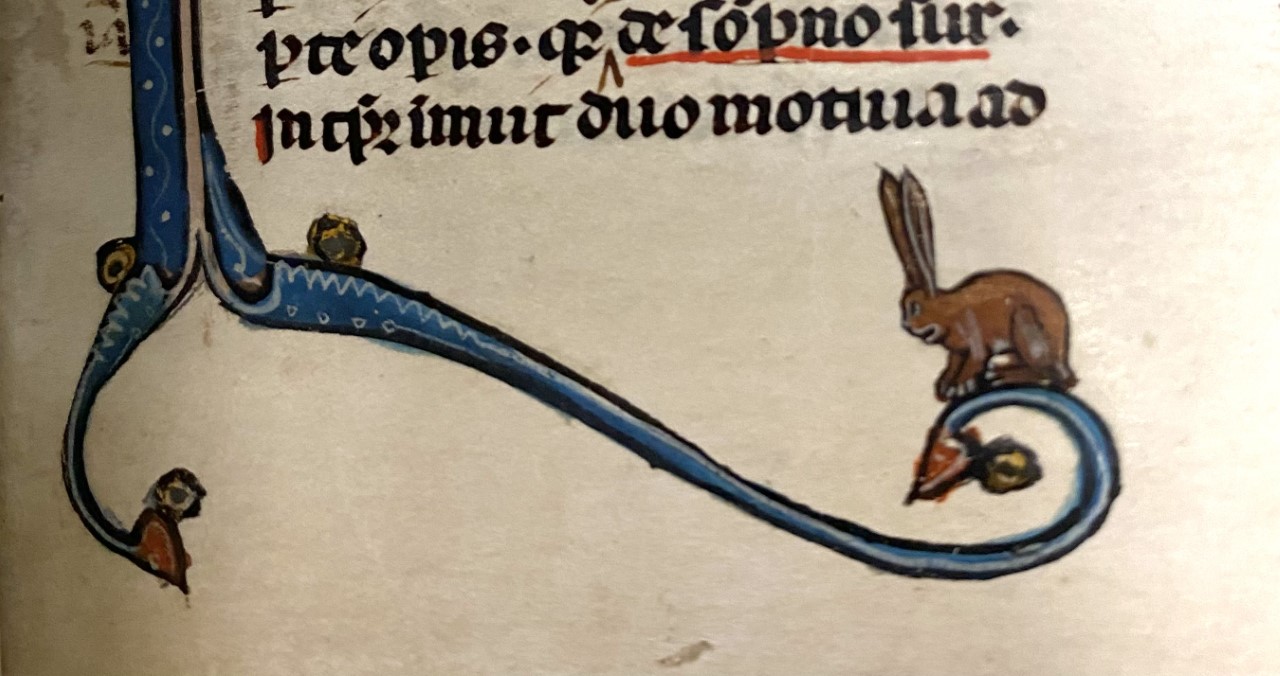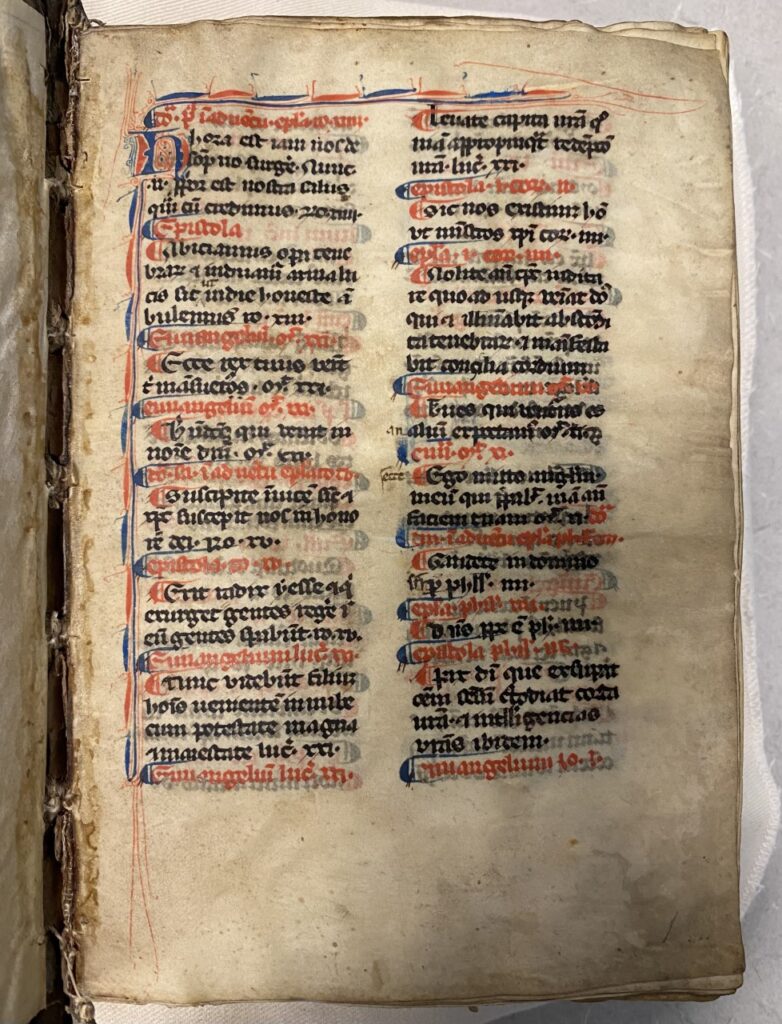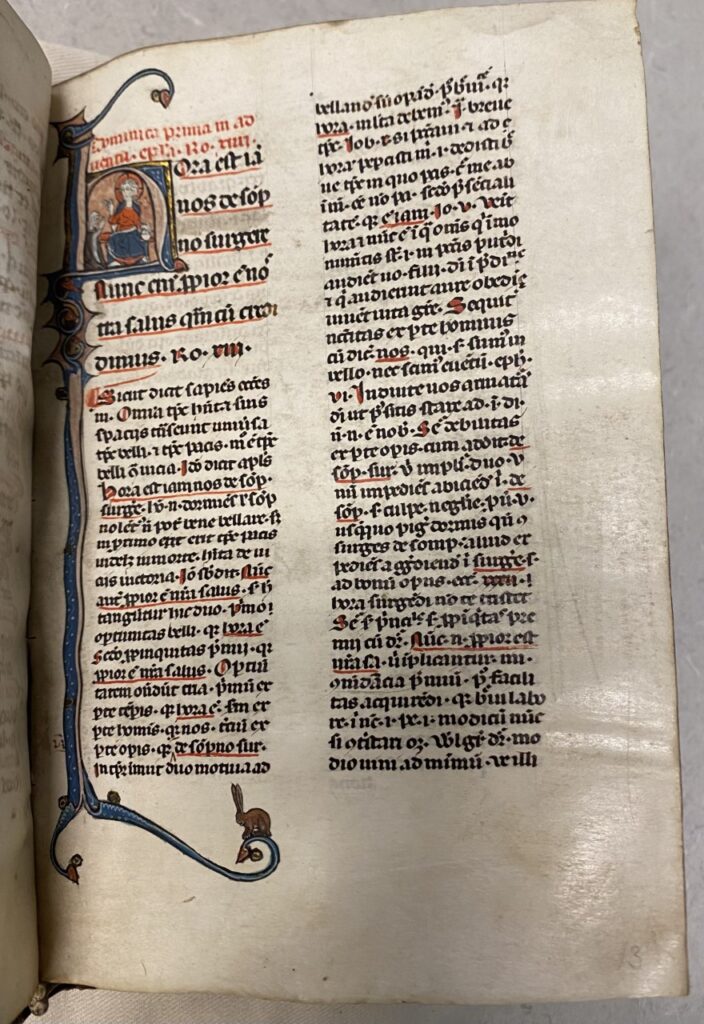Leather! Parchment! Gold! Red! Blue! Bunnies! Fancy-old-looking-script-I-can’t-read-because-it’s-in-Latin! The Sermons of Nicholas of Gorran is a codex full of wonder for both the new and seasoned manuscript fan. Medieval manuscripts have lots going on beneath the surface (and atop it), so let’s dive into the Sermons of Nicholas of Gorran.
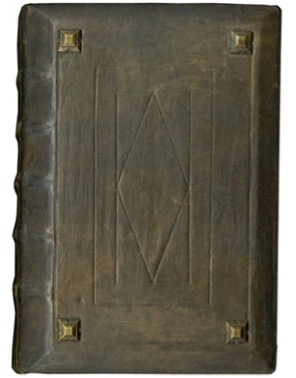
To start, it has one author: Nicholas of Gorran, a prominent Dominican preacher and then prior of Saint-Jacques in 13th century Paris who commented on and interpreted scripture. You likely don’t recognize his name, but you may have back then if sermons were your scene. To be fair, your current idols won’t be a household name centuries from now, either. His piety, sound judgement, and extensive scriptural coverage made him popular as both a preacher and writer, even attracting King Philip IV’s attention.¹ Many medieval manuscripts are compilations of works by different authors, like a collection of prayers, sermons, or short tales; a single-author manuscript is noteworthy. The Sermons of Nicholas of Gorran² contain a whole liturgical year of Nicholas’ sermons (duh), including ones for special occasions. It was likely a preaching aid because it has annotations from different hands consistently throughout it and revisions in the margins from one user.
But let’s work from the outside in.
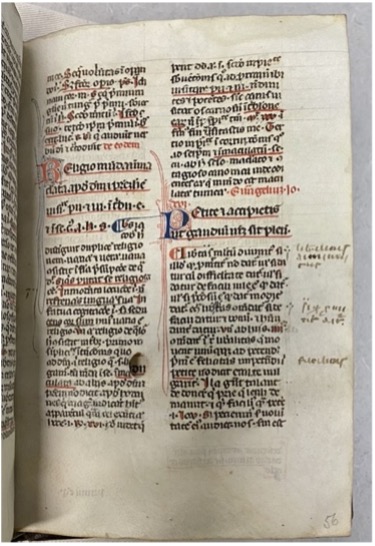
The leather binding over the cover boards has a geometric pattern etched into both sides. The binding is modern because the folio edges don’t meet the cover edges. It’s likely from the 19th or 20th century, meaning the manuscript was reassembled 700-800 years after its creation in 1275-1300 CE. Manuscripts are edited and travel quite a bit over their lifetime, so this binding update was likely done to reinforce its spiffiness and structure. But the cover wasn’t the only thing updated; the codex’s last two sections are flipped. The table of contents, a navigational tool and one of the last things to be added, reflects the order of the sermons before the swap.
Les Enluminures finds clues that this sermon book was copied during the lifetime of Nicholas de Gorran, perhaps under his supervision. The altered order of the sermons may relate to this, but we lack clear conclusions. The manuscript dealers suggest that Nicholas’ intentions may have shifted as the sermons were being refined at his Dominican convent. Plus, some sermons are unfinished, inserted, replaced, or edited.
It gets better.
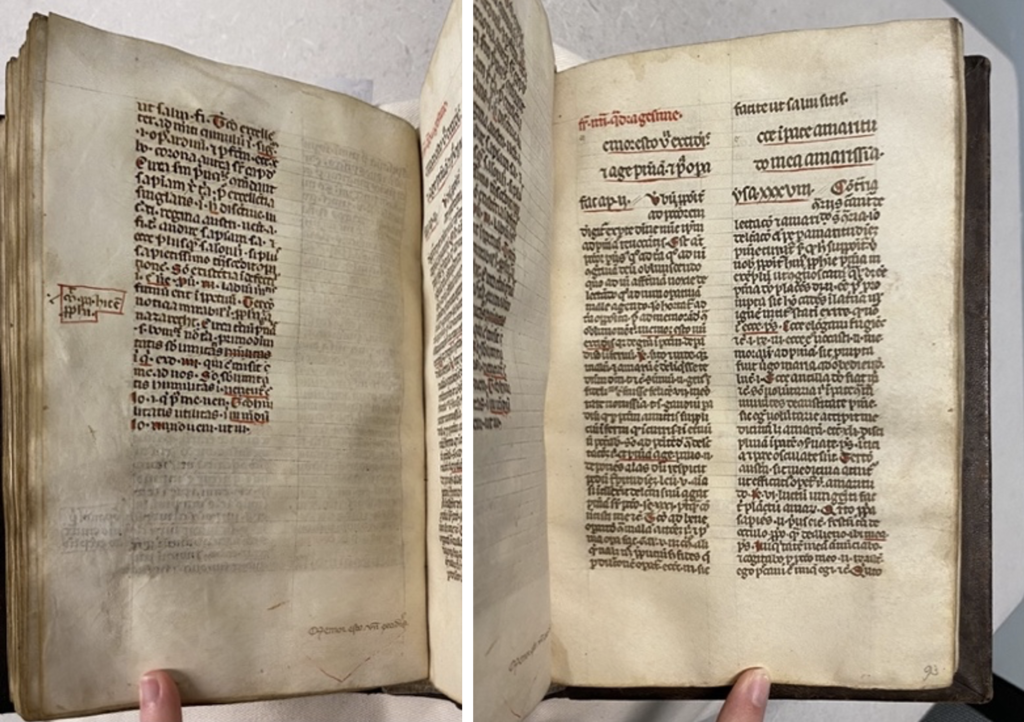
Variation in ink color, gothic hand, and line spacing suggest that three different scribes penned this manuscript. One scribe wrote the table of contents, one wrote two inserted folios, and the third wrote everything else. In fact, the third guy wrote 106 folios more than the first two scribes combined! He’d get the highest grade if this were a group project.
In the table of contents, we see rubrication (red ink used for emphasizing) indicating each different sermon listing. The first folio of the sermon section is signified by the only historiated initial in the codex, depicting Nicholas receiving Christ’ blessing. The initial is beautifully colored and gold, extending into a one-sided border. And the bunny sitting atop the lower border flourish is arguably the best part of the entire manuscript. The rest of the folios aren’t as impressive illustration-wise, but they do have decorated initials to indicate the start of each new sermon, alternating between blue and red pen-flourished initials. The scribes, illuminator, and everyone involved clearly put effort into making this manuscript the crème de la crème, so it must’ve been commissioned by someone important.
Obviously this isn’t the most impressive manuscript ever, but fancy is fancy. The Sermons of Nicholas de Gorran have traveled from hand to hand, or rather user to user, and somehow I ended up bent over it on a college campus. So, I hope you learned a nifty thing or two about this manuscript, and I hope you also find yourself doing something awesome one day that you would’ve never predicted.
Works Consulted
¹O’Connor, John Bonaventure. “Nicholas of Gorran.” The Catholic Encyclopedia. Vol. 11. New York: Robert Appleton Company, 1911. 2 Dec. 2022 <http://www.newadvent.org/cathen/11062b.htm>.
²Les Enluminures, TM 868, Sermons of Nicholas of Gorran
Credits
Author: Susanna Teske
Featured Image: illustrated bunny sitting atop the lower border flourish (TM 868, f. 13r)
